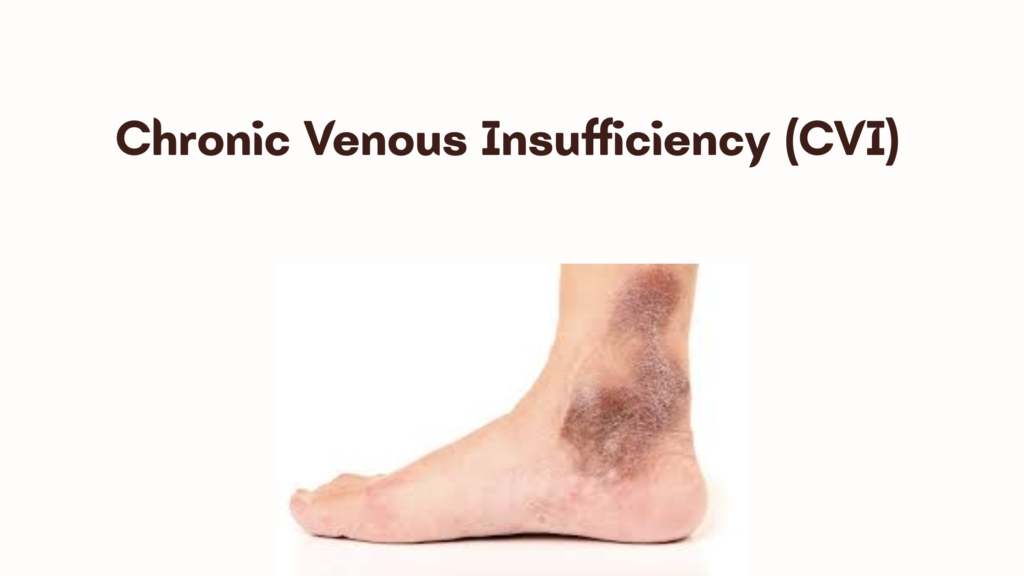Chronic Venous Insufficiency (CVI) is a long-term condition where the veins in the legs cannot pump enough blood back to the heart. It often results from damaged valves in the veins, leading to blood pooling in the lower limbs.
Causes
- Varicose veins or deep vein thrombosis (DVT)
- Valve malfunction in leg veins
- Obesity
- Pregnancy
- Sedentary lifestyle
- Aging
- Family history of venous disease
- History of leg injury or surgery
Symptoms
- Swelling (especially in ankles and calves)
- Pain, heaviness, or tiredness in legs
- Varicose veins
- Itching or tingling in the legs
- Skin changes (thickening, discoloration, eczema-like symptoms)
- Leg ulcers, particularly near the ankles (in advanced stages)
Stages of CVI (CEAP Classification)
- C0-C1: No visible signs or minor symptoms like spider veins
- C2: Varicose veins
- C3: Leg swelling (edema)
- C4: Skin changes (pigmentation, eczema, lipodermatosclerosis)
- C5: Healed venous ulcer
- C6: Active venous ulcer
Diagnosis
- Physical exam
- Duplex ultrasound (to assess blood flow and vein structure)
- Venography (rarely used)
Treatment
Conservative Management
- Compression therapy: graduated compression stockings (first-line treatment)
- Leg elevation (above heart level several times daily)
- Regular walking and leg exercises
- Weight loss
- Skin care to prevent ulcers and infections
Medical and Surgical Interventions
- Sclerotherapy
- Endovenous laser therapy (EVLT) or radiofrequency ablation (RFA)
- Surgical vein stripping
- Vein bypass or valve repair surgery (rare, for severe cases)
- Wound care for ulcers
Prognosis
CVI is chronic and requires long-term management. Early treatment can prevent complications like ulcers and reduce symptoms. Untreated, it may progress and significantly impair quality of life.
